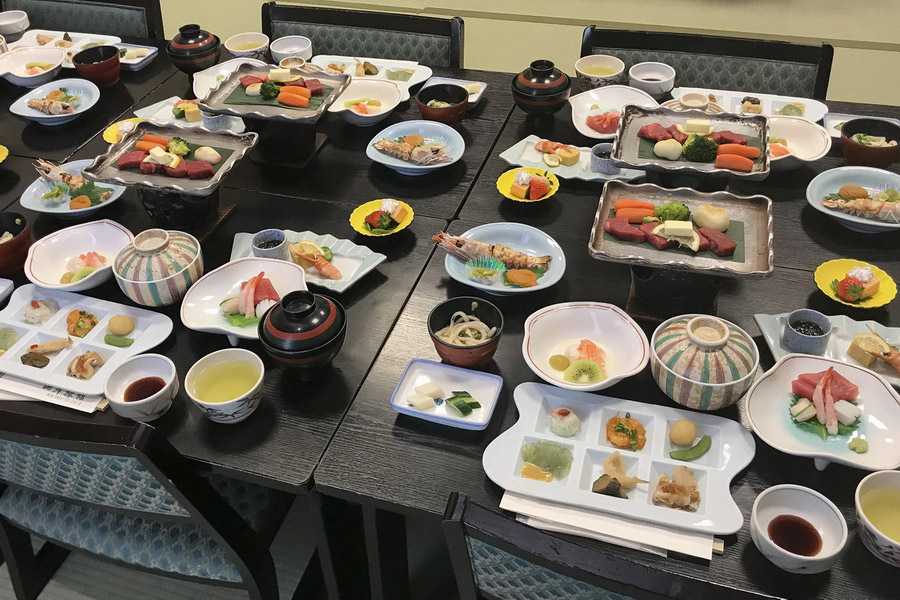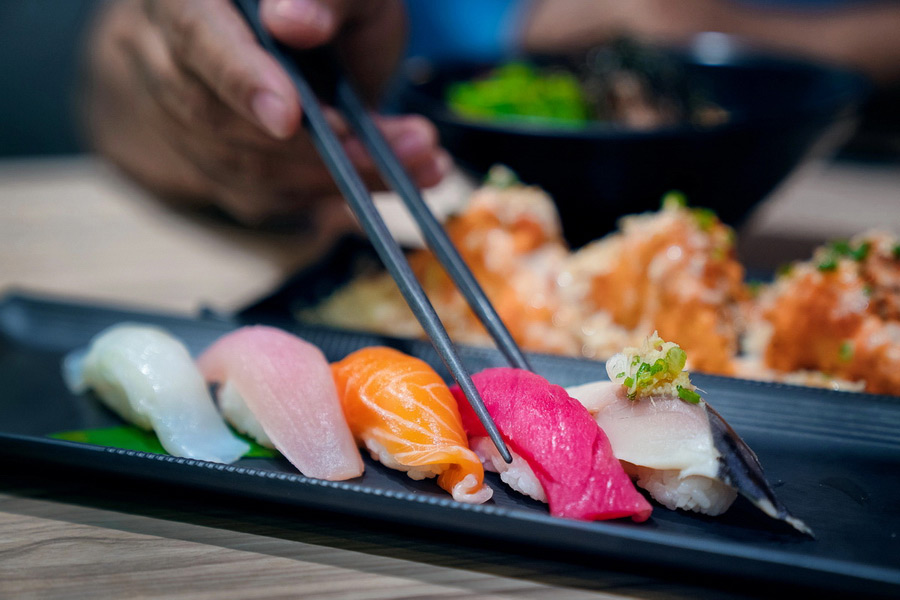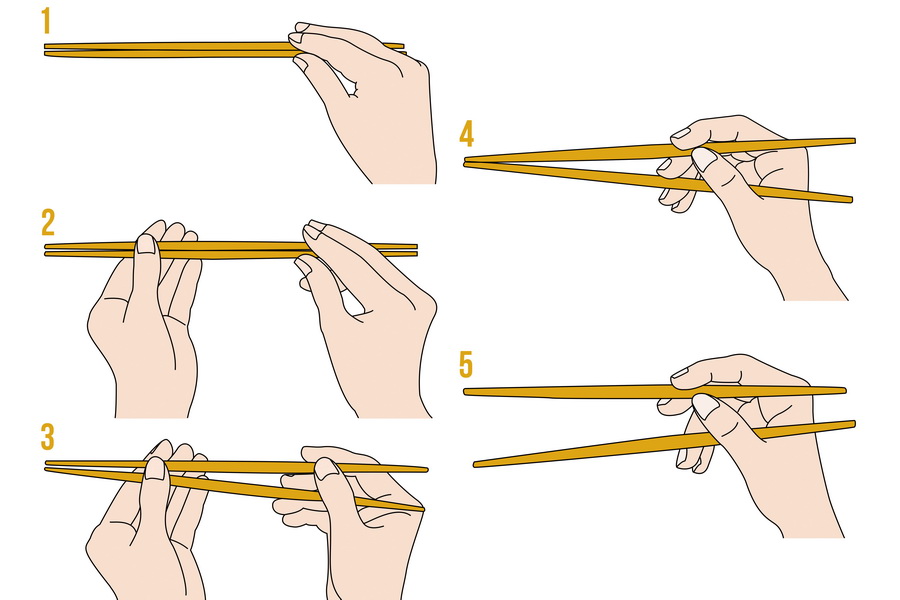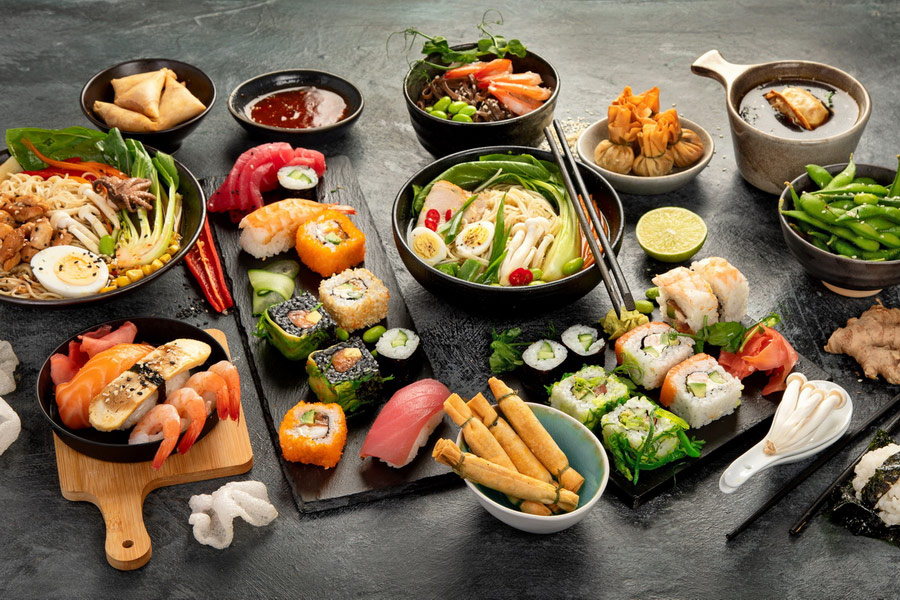
Japanese table manners are an essential part of daily life, deeply rooted in tradition and designed to add meaning to every meal while strengthening social bonds. What are the basic table manners of Japan?
Traditions of Beginning and Ending a Meal
Before beginning a meal, it is customary to say “itadakimasu” (いただきます, “I humbly receive”), a phrase that expresses gratitude
The food to those who contributed to the preparation of the meal: cooks, farmers, and even the animals. This phrase is typically accompanied by a gesture, with the palms of the hands folded in front of the chest or placed on the knees. This gesture dates back to the Asuka period (538-710) when Buddhist monks accepted something as a gift from dignitaries or before eating, thanking them for their offerings. Since then, the gesture has not been modified or lost its original meaning.
When dining in large groups, it is polite to wait until everyone has been served before beginning the meal. It is also customary to allow the most senior person present to start the meal first. When there is a shared dish in the middle of the table, everyone takes small portions, ensuring that they only touch the piece they intend to eat with their chopsticks. If, at the end of the meal, there is a small portion left of the shared dish, it is considered good manners to check with the others before taking it. Leaving food on your plate after the meal is strongly discouraged, as an empty plate is the best compliment you can give to the cook. This is the best way to be polite when eating in Japan.
After the meal, it is customary to say “gotisosama-desita” (ごちそうさまでした, “it was a wonderful meal”), a phrase that expresses gratitude to the cook for the food and their effort in preparing it.
Rules for Using Chopsticks

Chopsticks (khashi) became widely used in Japan during the Nara period (710-794). Initially made from split bamboo trunks, chopsticks are now crafted from various materials, including wood, animal bones, and different types of metal. The use of chopsticks is taught from an early age, and it is customary to give a child their first pair of chopsticks at the “First Chopsticks” ceremony on the 100th day after birth as a sign of good luck and long life.
Chopsticks are used exclusively for eating, and any other actions with them are considered disrespectful.
There are several important rules to remember when using chopsticks:
- Do not use them to hit the table or utensils.
- Do not point at something or someone with chopsticks while holding them above the plate.
- Do not shake chopsticks to cool a piece of food.
- Do not rummage through the food looking for the best piece.
- Do not move dishes with chopsticks.
- Do not stick them into a bowl of food (this is considered bad luck as it resembles incense sticks placed in the memory of deceased relatives).
- Do not hold chopsticks in your fist (this is seen as a sign of aggression).
- Do not put food on someone else's plate or pass it directly into someone else's chopsticks—this gesture is only used during funerals.
How to Use Chopsticks Step by Step

Before going to a Japanese restaurant, it’s helpful to practice how to use chopsticks:
- Place the first chopstick on the phalanx of your ring finger and in the space between your index finger and thumb.
- Clamp the chopstick in this position and hold it still.
- Fold your index and middle fingers together and place the second chopstick near their tips, holding it with the tip of your thumb.
If your fingers function like “tongs,” then you’ve mastered the technique of holding chopsticks!
How to Eat Sashimi, Sushi, and Rolls
Sashimi refers to thinly sliced raw fish, while sushi (or nigiri) is vinegared rice topped with a piece of fish or vegetables, and rolls are rice with fish filling wrapped in nori leaves. There is a specific order in which these dishes are traditionally eaten: sashimi is eaten first, followed by sushi and rolls. Starting with sashimi allows you to enjoy the pure flavor of the fish, while sushi and rolls, which include rice, provide a satisfying meal.
These dishes are typically accompanied by wasabi, soy sauce, and pickled ginger, which should be used correctly:
- Soy sauce should only touch the fish, not the rice, to prevent the rice from becoming soggy.
- Wasabi is traditionally applied directly to the sushi to sanitize the fish.
- Pickled ginger is used to cleanse the palate between different types of sushi.
In What Order to Eat Kaiseki Ryori

Kaiseki ryori is a refined form of Japanese cuisine that requires skill, patience, and a deep connection between the chef and nature. Kaiseki Ryouri consists of 14 small dishes that must be eaten in a specific order:
- Sakizuke - A small appetizer to whet the appetite.
- Hassun - A second course that sets a seasonal theme, usually including sushi and a side dish on an 8-sun (24-cm) tray.
- Mukozuke - A flat plate of seasonal sashimi.
- Takiawase - Vegetables paired with meat, fish, or tofu, each cooked separately over low heat.
- Futamono - A “lidded dish” typically served in a pot, often a soup.
- Yakimono - A grilled dish, most commonly fish.
- Su-zakana - A small dish designed to restore the sharpness of the taste buds, usually vegetables in vinegar.
- Hiyashi-bachi - Chilled vegetables, sometimes with shrimp or crab, served only in summer.
- Naka-kyoko - A dish to revitalize the palate, usually accompanied by a sour soup.
- Shiizakana - A main dish, often featuring fried or boiled beef, poultry, or fish.
- Gohan - A dish with rice and seasonal accompaniments.
- Ko-no mono - Seasonal pickled vegetables.
- Tome-wan - A final soup, often miso soup with added ingredients.
- Mizumono - A seasonal dessert, such as fruit or ice cream.
Japanese dining etiquette is not merely a set of rules; it is an essential part of the culture, reflecting deep respect for food and for others. Following these dining rules is an integral philosophy in Japan. Understanding these customs will not only enhance your enjoyment of Japanese cuisine but also help you appreciate and respect Japanese traditions.

